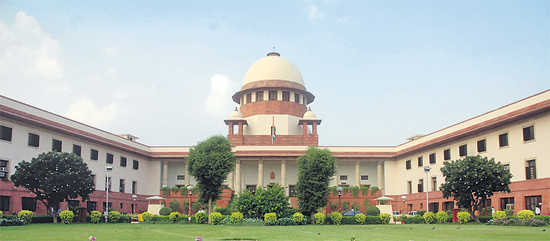Tribune News Service
New Delhi, September 27
Amid continued attempts from Muslim parties to discredit the 2003 report of Archaeological Survey of India (ASI) on Ram Janmabhoomi-Babri Masjid, the Supreme Court on Friday defended it, saying it was not an ordinary opinion as archaeologists were acting on behalf of Allahabad High Court and inferences were drawn by “cultivated minds”.
The High Court had asked the ASI in 2002 to excavate the site and give its findings on whether the “disputed building” was constructed on the site of an “alleged Hindu temple” after demolishing it. After analysing the artefacts, idols, pillars and other remains found at the disputed site, ASI report talked of the existence of a massive structure beneath the “alleged Babri Masjid”.
But lawyers representing Muslim parties have been attacking the ASI report, terming it “merely an opinion” and not binding on the court. On the 33rd day of the hearing on Friday, a five-judge Constitution Bench headed by Chief Justice of India Ranjan Gogoi sought to put at rest the controversy over the ASI report, saying the inferences from the report were drawn by “cultivated minds” (archeologists).
“You (lawyer) cannot equate the (court) Commissioner’s report to any other ordinary opinion. They (ASI experts) conducted it (excavation) after the Commissioner asked them,” the Bench said, adding, the experts excavated and analysed the excavated material on the direction of the Commissioner who was delegated the powers by the Allahabad High Court.
The Bench — which also includes Justice SA Bobde, Justice DY Chandrachud, Justice Ashok Bhushan and Justice S Abdul Nazeer – said it was conscious of the fact that both sides had their arguments based on inferences and there were no eyewitnesses to these events. “We have to see which side’s story is reasonably probable,” it noted.
On behalf of the Wakf Board, senior counsel Meenakshi Arora maintained the ASI report was “weak evidence” and merely “an opinion” which needed to be supported by substantial proof to establish that a Ram temple existed at the disputed site before the mosque came up.
Unlock Exclusive Insights with The Tribune Premium
Take your experience further with Premium access.
Thought-provoking Opinions, Expert Analysis, In-depth Insights and other Member Only Benefits
Already a Member? Sign In Now










